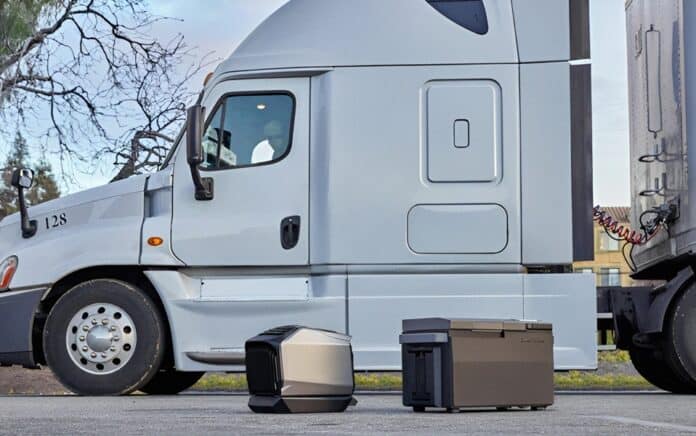Australia has a unique landscape, lifestyle, and driving conditions. It is not enough to buy a vehicle without considering traction and control. That is why the idea of vehicles with All-Wheel Drive (AWD) and Four-Wheel Drive (4WD) systems is catching the attention of car and travel enthusiasts. But what is the difference between AWD vs 4WD?
Both systems are designed to help cars drive better but operate differently based on driving scenarios. Whether you love van life adventures, off-road camping, or just road-tripping, the right system can take you to your destination. In this article, let’s explore together everything you need to know about AWD and 4WD to help you assess this trend before making a decision.
What Is AWD?
AWD (All-Wheel Drive) is a drivetrain system in vehicles that distributes power to all four wheels for improved traction and stability. Unlike FWD (Front-Wheel Drive) or RWD (Rear-Wheel Drive), where power is sent only to the front or rear wheels, AWD continuously or automatically adjusts power to all four wheels as needed.
How Does AWD Work?
AWD system sends power to all four wheels but how it sends power depends on whether it is fully or partially delivering power. Here’s how part-time and full-time AWD works:
Full-Time AWD: A car is in full-time AWD mode when all four wheels always receive power, but the system continuously adjusts how much power goes to each wheel based on road conditions. If you’re driving on a highway and touch a wet road, the system automatically adjusts traction to prevent slipping.
Part-Time AWD: A car is in part-time AWD mode when four wheels don’t always receive power. It’s perfect for driving on a dry road and uses two-wheel drive (2WD) mode, either in front-wheel drive (FWD) or rear-wheel drive (RWD). Your car stays in 2WD mode to save fuel but automatically switches to AWD mode if it senses wet roads.
What Is 4WD?
4WD is a system designed for extreme off-road and tough terrains. You have to turn it on only when needed. When turned on, it sends power to all four wheels, providing maximum traction or grip to make your car stronger for rough terrains. It means it helps your car when you go through deep mud, rocky roads, or sand.
How Does 4WD Work?
Since 4WD are meant for offroad adventures and tough situations, 4WD vehicles will consume more fuel once manually turned on for stronger torque. If you’re activating 4WD mode, it is essential to bring a power source in case your car or camp-van battery runs out. Here’s how part-time and full-time 4WD works:
Part-Time 4WD: A car is in part-time 4WD mode if it runs in the standard 2WD mode. You must manually switch to 4WD when needed through a lever or electronic switch. It will stay in a 2WD mode in passing rough roads and terrains to save fuel unless changed to a full-time mode for stronger traction and torque.
Full-Time 4WD: A car is in full-time mode if all four wheels are always powered and not in 2WD mode. And when you activate 4WD mode, it will consume more fuel to pass through tough terrains or off-road adventures. This is not recommendable for city or daily driving because it uses more fuel even if you’re on highway driving.

All Wheel Drive Vs 4 Wheel Drive: What’s the Difference?
While both AWD and 4WD systems aim to improve traction by powering all four wheels, their designs and intended uses differ significantly. Below are the key differences between AWD ands 4WD.
Engagement: AWD systems are usually automatic, distributing power as needed without driver intervention. In contrast, 4WD systems often require manual activation, giving drivers control over when to engage all four wheels.
Terrain Capabilities: AWD is best for everyday driving and wet highways while 4WD is meant for extreme conditions such as sand, mud, and crossing rivers. Avoid using an AWD vehicle for 4WD conditions like camping as you will likely consume more fuel and your battery may get drained. If you want to challenge an AWD vehicle to 4WD conditions, bringing a portable power station is essential for the worst-case scenarios in the middle of the road.
Fuel Efficiency: AWD system consumes less fuel than a 4WD system because it only activates full AWD when necessary. For long camping and outdoor trips, especially 4WD trips, bring an alternator charger such as EcoFlow 800W Alternator Charger to faster recharge your power backup.
Vehicle Types: AWD is found in SUVs and crossovers like the Subaru Outback and Toyota RAV4. 4WD is common in off-road cars like Ford Ranger and Mitsubishi Pajero. If you’re into van life or motorhome travel, choose the right vehicle system and look for motorhome tips or camping to prepare well your outdoor adventures.
Adventure Readiness: AWD is best for destinations with smooth roads while 4WD is best for campers and outdoor explorers. If you’re into off-grid camping and going to remote places with no electricity, use a 4WD system with a power backup for both your car and devices for uninterrupted outdoor adventures.

Is AWD or 4WD Better for Off-Roading?
For serious off-roading, 4WD is the best choice while following some tips for 4WD camping. It provides better traction, low-range gearing, and durability for extreme terrain. You can still challenge your AWD to pass through 4WD driving conditions. However, AWD is more useful for light off-roading, such as dirt roads and rainy conditions.
Regardless of the system you choose, preparing a power backup like EcoFlow DELTA 3 Plus Portable Power Station is essential for exploring places with no electricity. Driving a 4WD vehicle or campervan will drain fuel faster. This also applies if you’re up to challenge your AWD for 4WD driving conditions as unwanted situations may occur.
You should also use compatible solar panels for your portable power station such as EcoFlow 400W Portable Solar Panel which is foldable and can be carried anywhere. If you want to charge your car battery to your portable power station, use a charger like EcoFlow Smart Auto Battery Charger to connect your car battery to the power source.
For enhanced comfort during off-road and camping adventures, consider the EcoFlow WAVE 2+ EcoFlow GLACIER (portable air conditioner and portable fridge) to ensure optimal temperature control and food preservation in remote locations.
By preparing camping essentials for your off-road adventures and van life adventures, you are preparing for a seamless journey without worrying about your power source and car battery interruptions.
Conclusion
Choosing between AWD and 4WD depends on your driving needs. If you’re looking for a vehicle that handles city roads, rain, and light off-road trails, use an AWD vehicle. However, if you’re a 4WD camping enthusiast or extreme off-road explorer, use a 4WD vehicle. Regardless of your choice, bringing power backup essentials is important for both your 4WD and AWD van adventures as they can save you during emergencies or unfortunate situations.
FAQs
Can AWD go off-road?
Yes, but only for light off-roading like gravel roads and mild dirt tracks. AWD lacks the low-range gearing and manual control that 4WD offers, making it unsuitable for deep sand, mud, or rock climbing.
Is AWD or 4WD Better in the Snow?
For city snow conditions, AWD is better because it works automatically to adjust traction. However, for deep snow or unpaved icy roads, 4WD is better since it locks all four wheels for extra grip.
Can I switch between AWD and 4WD modes in my vehicle?
No. AWD operates automatically, while 4WD requires manual switching. Some modern vehicles offer automatic 4WD modes, but they are still different from AWD systems.


